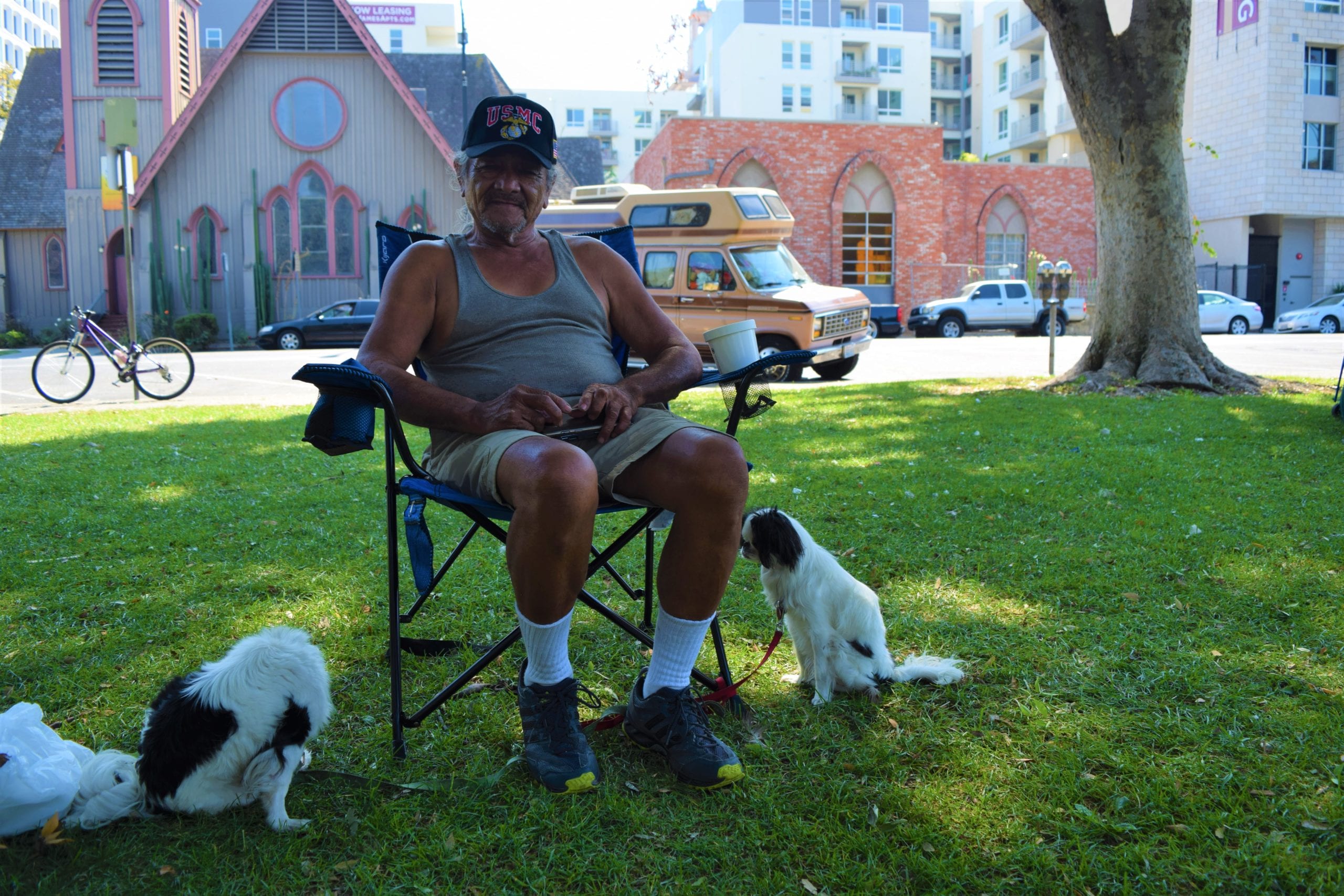Coronavirus hotspots: Top 3 areas hardest hit in Santa Clara County, Part 2
A near ghost town where row after row of boarded-up storefronts now serve as shelter to a growing homeless population, downtown San Jose has one dubious distinction. Its primary ZIP code — 95113 — this month had the second-highest rate of COVID-19 infections in Santa Clara County.
Robert Aguirre, a local advocate for the unhoused, said city and county governments must do a better job to reach homeless residents to prevent more rapid spread of coronavirus. There are more than 6,000 homeless residents in San Jose, according to the city’s most recent homeless census, though it is unclear how many homeless people live downtown.
“There’s a large number of people who have not been tested,” Aguirre said. “We’re letting these people slip through our fingers.”
According to county data, 62 people tested positive for the virus in the 95113 ZIP code as of Nov. 9. With a small population of 1,939 people, the number of cases in the area amounts to a rate of 3,198 cases for every 100,000 people.
This is higher than the average number of cases per 100,000 people in California as a whole, or 2,419, according to the Centers for Disease Control. East San Jose’s ZIP code — 95122 — ranked No. 1 with the highest rate of infections per capita in Santa Clara County as of Nov. 9.
The median household income in the 95113 ZIP code is about $34,000, according to available data. Meanwhile, the average household income is $130,000, pointing to a wide disparity between the neighborhood’s highest income earners and a typical resident.
In addition, roughly 15% of residents in the ZIP code are Black, more than five times the proportion in the city as a whole.

Dr. Sarah Rudman, assistant health officer with Santa Clara County, said there have been a relatively low number of homeless people who have tested positive for the virus so far.
However, according to Aguirre, only 45% of the homeless people contacted by the county agreed to take the test. He said the county should enlist advocates like himself to go out to areas with large numbers of homeless people to screen for virus symptoms.
“If we were armed with infrared thermometers, we could screen an encampment… and find the people that are displaying the symptoms,” Aguirre said.
Santa Clara County and San Jose have taken several steps to address the spread of COVID-19 among the homeless population, including adding more than 1,000 new shelter beds in motels, community centers and the Santa Clara County Fairgrounds.
Aguirre also said there needs to be more information spread out to homeless communities so people understand the value of testing and wearing masks.
Jonathan Williams said he’s lived downtown for more than 30 years and sees the spread of the virus as a direct result of President Donald Trump’s negligence and lack of respect for people of color.
Both Black and Latinx people have higher death rates relative to their population in Santa Clara County, according to county reports.

“He took down the pandemic office that President Obama had (established),” Williams said. “He opened the floodgates for this disease to come in this country.”
Eric Larson works in the WeWork offices on Santa Clara Street downtown and said he’s seen a swift reduction in the amount of foot traffic but an increase in homelessness.
“It’s really slowed things down in this area,” Larson said. “It’s not as vibrant as it used to be.”

WeWork, which offers shared work spaces, has thinned out the number of available offices and cleaned the area more frequently, Larson said. Most workers and customers of downtown businesses wear masks, he said, in contrast to many homeless residents of St. James Park.
George Villanueva, who lives in a small RV and often rests at St. James Park during the day, said he is not worried about the virus and thinks it’s not much worse than the flu.
“The only (people) it’s affecting are the elderly who have pre-existing conditions,” Villanueva said. “People who don’t have pre-existing conditions fight it off just like the flu.”

Villanueva questioned the need for masks and wondered whether their use could have adverse health effects.
“They’re just making a lot of money over people’s fears,” Villanueva said.
Scott Largent, who lives downtown, said he became homeless after his business failed and he became addicted to meth.
“It was to cope with things,” Largent said. “But it made it almost a thousand times worse.”
Now sober for five years, Largent said the pandemic has severely reduced the services available to unhoused people downtown. Largent said the city had shut off water at parks, closed restrooms and even removed hand-washing stations from portable toilets.
Largent said the city and county need to get more people on the ground and speaking to unhoused people downtown and in other areas to find out what their most urgent needs are.
“They should have portable shower stations, everywhere, where there’s a lot of homeless people and mentally ill,” Largent said. “It’d be great for everybody.”
Contact Sonya Herrera at [email protected] or follow @SMHsoftware on Twitter.
Contact Mauricio La Plante at [email protected] or follow @mslaplantenews on Twitter.




Leave a Reply
You must be logged in to post a comment.